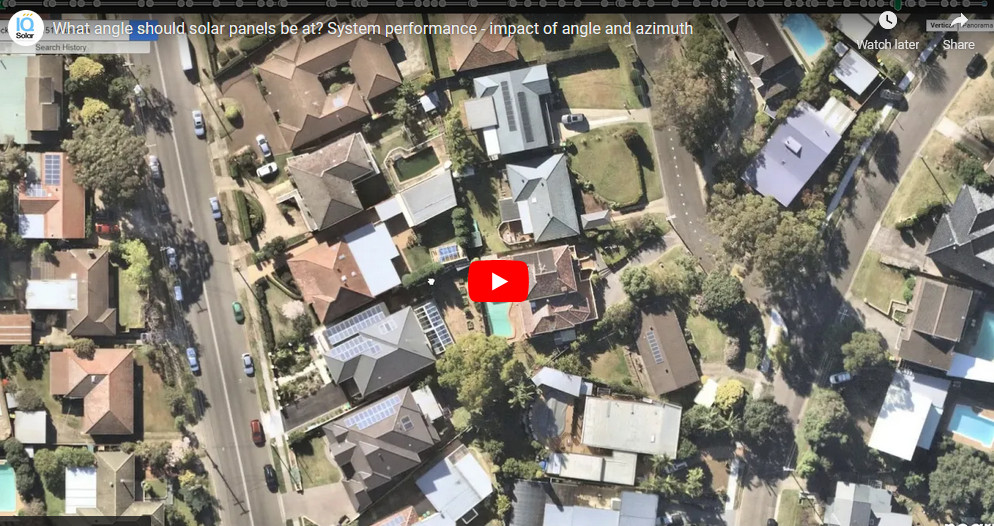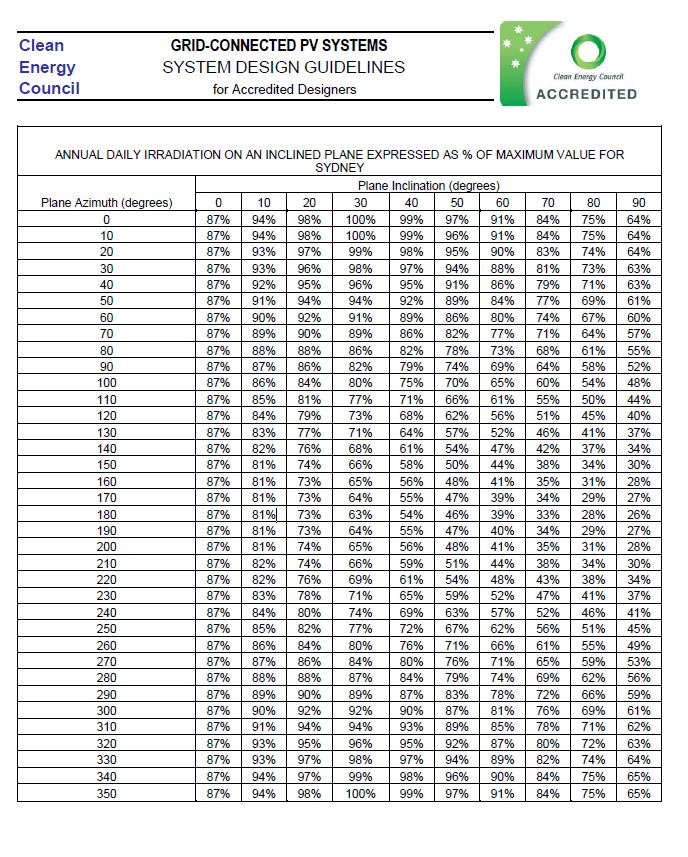What angle is best for solar panels?

There’s an old line that says ‘ the best camera is the one you have with you’, and roofs are a bit the same. You can’t wish for a different roof. The roof you have is what you are stuck with.
So, with a trend of people installing larger systems, we are often looking for all the positions we can put panels on in order to maximise a system size. And often that means a roof that isn’t just large and lovely and conveniently facing north. This is a system from 2011 (not mine), which, if it were being installed would probably be installed on the western side of the house.

The optimum output of solar is achieved by a north facing panel (in Australia), at an angle which is relative to your geography. So, in Sydney it will be different to Darwin for example. The difference is because the sun’s position in the sky varies by geography. It also varies by time of year.
So, often we are left looking at what is possible to fit on a house, and trying to optimise that. If it is less than optimal, we need to explain why we have chosen a layout, and see if that makes sense for the homeowner. The good thing is that we have great tools to do system designs, and show them to people before a panel ever gets on site. So, positioning and performance should never be a surprise for someone. Let me show you the implications of angle and orientation.
Here’s a document that is part of the CEC system designer’s toolbox… it’s not intuitive, so I have made a video with some examples below. Plus, click the table to see the full document with other city’s numbers.

Grid Connect Design Guidelines CEC
Here’s a video with some examples of angle and orientation.
https://www.youtube.com/watch?v=gCHoe01EUT8
The reason this matters is that people will often be short of space.
A few things to be aware of:
- East and West are great. typically with a loss of about 15% from optimal.
NW and NW are almost as good as North. Only a 4-6% loss. - SW and NW are OK, with losses of around 20%, as long as the losses are discussed, and the numbers still make sense.
- West beats East in most cases, not because of production, but because afternoon production matches consumption better.
- People put them on the south too… and as long as you are fully aware of the losses, and the system still meets your goals, that’s OK.
- You should be getting a yield prediction from whoever you’re talking to about solar, and a savings prediction.
- Shading can kill a system’s economics far more easily that a bad position.
At the risk of throwing you into the arms of people who will send you on a journey to get more quotes, here’s some useful additional reading on this subject.
https://www.mcelectrical.com.au/tilting-solar-panels-a-waste/
https://www.solarquotes.com.au/blog/solar-panel-tilt-frames-are-they-worth-it/
https://www.solarchoice.net.au/blog/solar-panel-tilt-and-orientation-in-australia/
Recent Videos:
What is NOT buying solar costing you?
Reasons not to choose the cheapest solar systems
Mistakes people make when buying solar systems in Sydney
The trap of "interest free" money in solar power
10 facts about the STC solar 'rebate'
Why do people offer 6.6kW solar systems?
What is the solar rebate change from 2020 to 2021?
Why people promote 6.6kW systems?
What happens to a solar in a blackout?
What angle should solar panels be at?
To tilt or not to tilt solar panels?
Optimizing vs Maximizing system sizes
Made in China - is that an issue?
What an inverter does and types of inverter
How we analyse commercial solar?
How much of my power bill I can eliminate?
Do batteries make sense for your solar system?
What solar panels should you choose?
What angle is best for solar panels?
